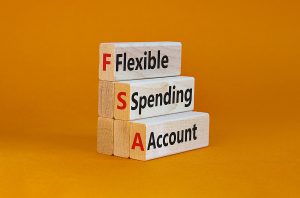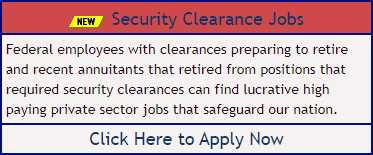With the Federal Open Season this is a great time to review a benefit that is not widely used by Federal employees, the Federal Flexible Spending Account Program (FSAFEDS).

The first question most Feder employees ask is “What is the Federal Flexible Spending Account Program (FSAFEDS)?”
FSAFEDS allows federal employees to save money for health care expenses with a Health Care or Limited Expense Health Care FSA. Think of it as a savings account that helps you pay for items that typically aren’t covered by your FEHB Plan, the Federal Employees Dental and Vision Insurance Program, or other health insurance coverage. Things like deductibles, out of pocket expenses, and other expenses that may not be cover by the medical coverage (FEHB) and Dental or Vision (FEDVIP)
FSAFEDS also offers an account for families with young children or elder care expenses – the Dependent Care FSA. This account allows you to set aside money to pay for your day care expenses.
Eligible employees can enroll in FSAFEDS each year during the FEHB Open Season, November 8th to December 13th, 2021. Contribute are made directly from bi-weekly pay on a pre-tax basis into the FSA. New and newly eligible employees who wish to enroll in this program must do so within 60 days after they become eligible, but before October 1 of the calendar year. Retirees are not eligible to participate in the FSA program.
The next question is “How does it work?”
There are three different Flexible Spending Accounts plans available:
Health Care FSA (HCFSA)
With a Health Care FSA, you use pre-tax dollars to pay for qualified out-of-pocket Health Care expenses. The money you contribute to a Health Care FSA is not subject to payroll taxes, so you end up paying less in taxes and taking home more of your paycheck.
- Used to pay for eligible medical, dental, and vision care expenses not covered by the plans
- Co-pays, co-insurance, and deductibles
- Professional services: physical therapy, chiropractor, and acupuncture
- Prescription drugs, insulin, and prescribed over-the-counter medicine
- Over-the-counter health care items: bandages, pregnancy test kits,
blood pressure monitors, etc.
- Can contribute up to a maximum of $2,750 per individual employee (2022)
- Access the full amount of your account on day one of the plan year
- Can carry over up to $550 from one plan year to the next (You must sign up for a least $100 to be deducted for the next plan year)
- Can be reimbursed by check or direct deposit into checking or savings account
Limited Expense Health Care FSA (LEX HCFSA)
If you’re enrolled in an HSA-qualified high-deductible health plan and have a Health Savings Account (HSA), you can increase your savings with a Limited Expense Health Care FSA (LEX HCFSA). This pre-tax benefit account helps you save on eligible out-of-pocket dental and vision care expenses while taking advantage of the long-term savings power of an HSA.
- Can contribute up to a maximum of $2,750 (2022)
- Used to pay for eligible dental, and vision care expenses not covered by the plans
- Co-pays, co-insurance, and deductibles
- Vision exams, LASIK surgery, contact lenses, and eyeglasses
- Dental cleanings, X-rays, fillings, crowns, and orthodontia
- Access the full amount of your account on day one of the plan year
- Can carry over up to $550 from one plan year to the next (You must sign up for a least $100 to be deducted for the next plan year)
- Can be reimbursed by check or direct deposit into checking or savings account
Dependent Care FSA (DCFSA)
A Dependent Care FSA (DCFSA) is a pre-tax benefit account used to pay for eligible dependent care services, such as preschool, summer day camp, before or after school programs, and child or adult daycare. It’s a smart, simple way to save money while taking care of your loved ones so that you can continue to work.
- With a Dependent Care FSA, you use pre-tax dollars to pay qualified out-of-pocket dependent care expenses.
- Care for your child who is under age 13
- Before and after school care
- Babysitting and nanny expenses
- Daycare, nursery school, and preschool
- Summer day camp
- Care for your spouse or a relative who is physically or mentally incapable of self-care and lives in your home
- Care for your child who is under age 13
- Can contribute to up to a maximum of:
- $2,500 per year if you are married and file a separate tax return (2022)
- $5,000 per year if you are married and file a joint tax return or if you file as single or head of household. Both cannot claim $5,000 (2022)
- When the account has the funds, you can use your balance to pay for eligible expenses
- Can only use the funds that are available in the account, not the entire election amount
- Funds must be used by March 15th, 2022 or lose it and claims must be submitted by April 30, 2022
As a rule, you can’t change your Health Care FSA (HCFSA), Limited Expense Health Care FSA (LEX HCFSA), or Dependent Care FSA (DCFSA) election amount during a benefit period (the plan year). That’s why it’s important to plan an election that suits your needs for your entire benefit period. But there are circumstances – called qualifying life events (QLEs) – when you can make changes.
The final question is “How do I calculate how much to contribute to the FSA?”
This question can be a tricky because it depends on the individual, the family, FEHB plan selected and the Dental or Vison plan selected. The amount can vary based on other factors such as the plan copayments, deductibles, out of pocket expenses, prescription drugs and planned medical or dental procedures.
A good starting point is to look at your 2 years of uncovered expenses. You can obtain that information from your FEHB and dental and vision insurance plan providers by looking at your Explanation of Benefits (EOBs). These can be obtained go going on the carrier’s website or contacting the carrier directly. Add up the two years’ worth uncovered expenses and subtract out any extraordinary expenses, i.e. broken foot. Then divide by 2. After you get that figure add in any planned expense for procedures you may have for the upcoming year, i.e. Lasik surgery. If you are unsure, you can always just contribute $550 for the first year. And since you can carry over up to $550 remaining in either your HCFSA or LEX HCFSA account from one plan year to the next (must re-enroll each year), there’s no reason not to take advantage of the tax savings this year and every year.
For more details on eligible expenses or to enroll in the plan go to the Federal Flexible Spending Account Program (FSAFEDS) website at www.fsafeds.com [2].
If you would like more information on how to optimize use of all your FERS benefits, check out Public Employees Benefits Advocates (PEBA) [3], a self-paced, online course.
- Shawn McCoy is the President and Founder of Federal Employee Benefits Advocates, LLC (FEBA) an educational and training company located in Shreveport, LA. Mr. McCoy is an expert on Federal employee benefits and has spoken to more than30,000 Federal employees over the last 12 years. For more details about the training programs offered by FEBA check their website. www.febadvocates.com [4]
Helpful Retirement Planning Tools
- Retirement Planning For Federal Employees & Annuitant [5]
- The Ultimate Retirement Planning Guide – Start Now [6]
- Medicare Guide [7]
- Medicare and FEHB Options – What Will You Do When You Turn 65? [8] (Part 1)
- Budget Work Sheet [9]
- Social Security Guide [10]
Disclaimer: The information provided may not cover all aspect of unique or special circumstances, federal regulations, medical procedures, and benefit information are subject to change. To ensure the accuracy of this information, contact relevant parties for assistance including OPM’s retirement center. Over time, various dynamic economic factors relied upon as a basis for this article may change. The advice and strategies contained herein may not be suitable for your situation and this service is not affiliated with OPM or any federal entity. You should consult with a financial, medical or human resource professional where appropriate. Neither the publisher or author shall be liable for any loss or any other commercial damages, including but not limited to special, incidental, consequential, or other damages.
Last 5 posts by Shawn McCoy
- Flexible Spending Account - 60 Day Window Open [12] - July 23rd, 2020
- Flexible Spending Accounts (FSA) [13] - July 21st, 2019

